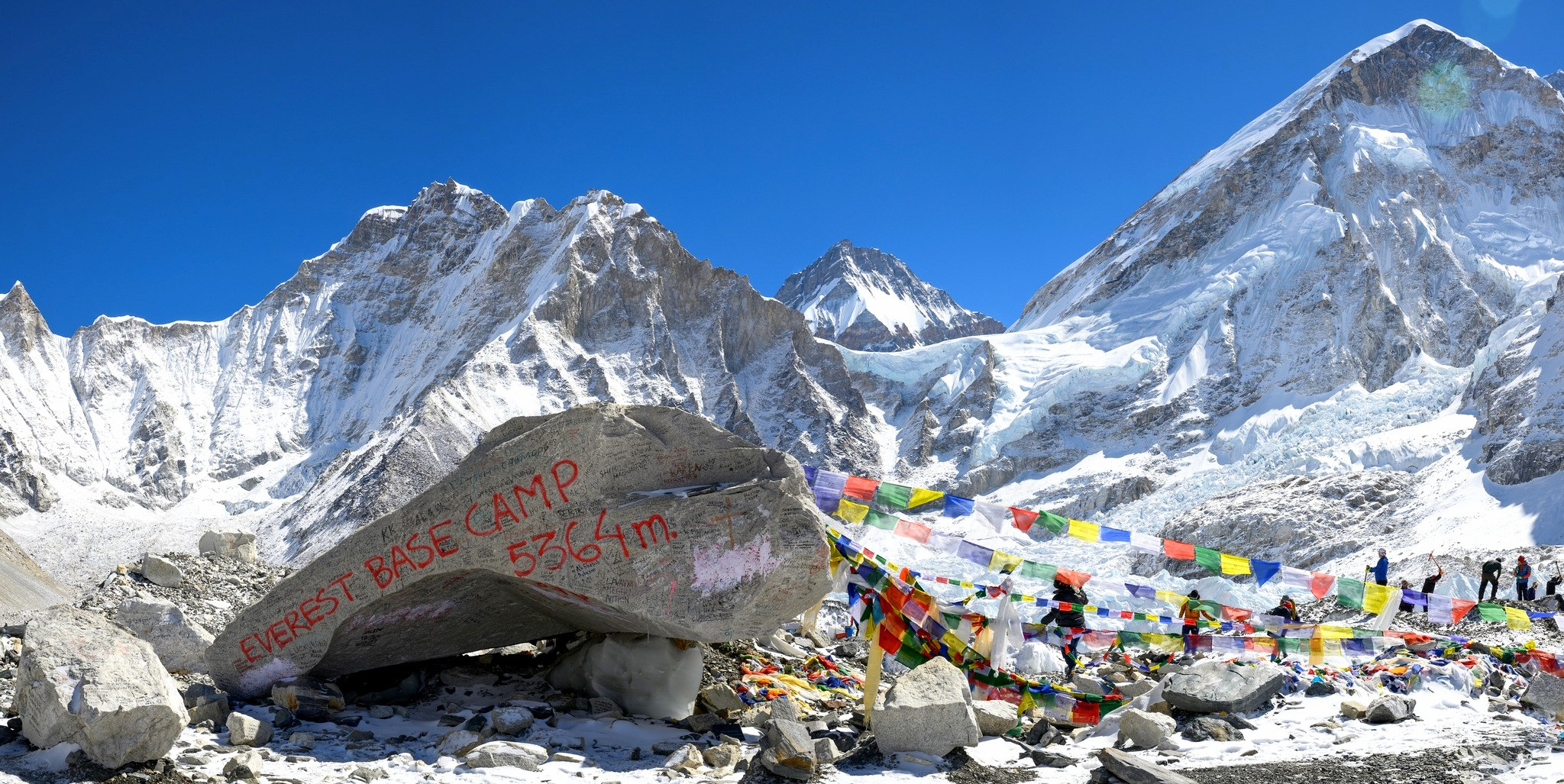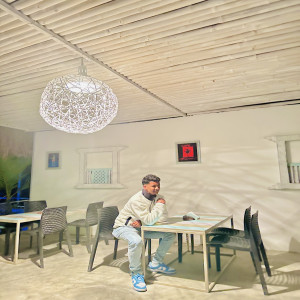Everest Base Camp Trek
The Everest Base Camp Trek is one of the most iconic and exhilarating journeys in the world, offering the chance to stand at the foot of the highest mountain on Earth. Here’s a comprehensive look at what the trek entails, why it's so revered, and key details for anyone considering this adventure.
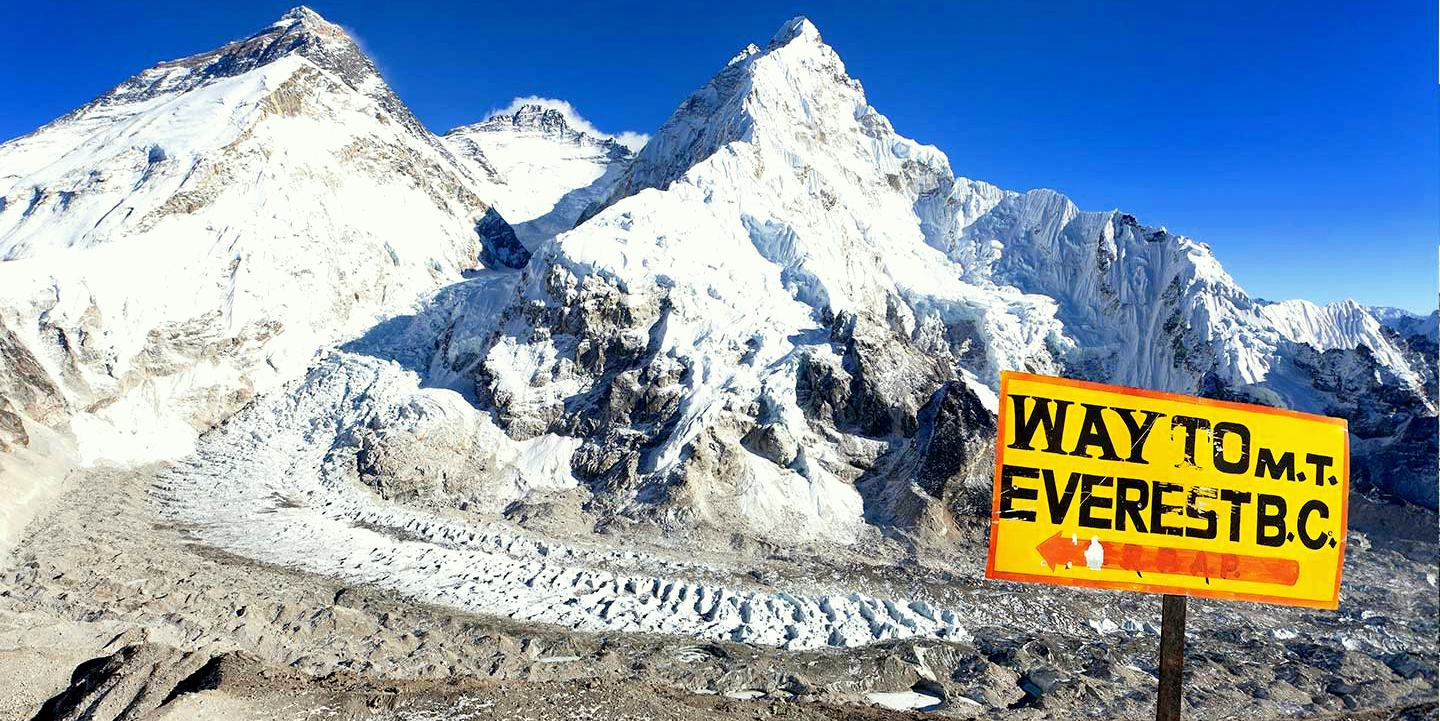
Highlights
-
Kala Patthar: For many, the climb to Kala Patthar is a highlight, offering the most accessible point to view Mt. Everest from base to peak.
-
Sherpa Culture: Immersive cultural experiences in villages like Namche Bazaar and Tengboche, including visits to monasteries and museums.
-
Flora and Fauna: The trek traverses through the Sagarmatha National Park, a UNESCO World Heritage site, rich with unique wildlife and vibrant rhododendron forests.
Trek Details
-
Duration: The trek usually lasts between 12 to 14 days, depending on the itinerary and pace of the group.
-
Distance: The total distance of the trek is about 130 kilometers round trip.
-
Altitude: Reaching heights of up to 5,364 meters (17,598 feet) at Base Camp and 5,545 meters (18,192 feet) at Kala Patthar.
Best Time to Trek: The best trekking season Everest offers is during the pre-monsoon season (March to May) and the post-monsoon season (September to November). These months feature clearer skies and more stable weather, providing safer conditions and better views.
Difficulty: The EBC Trek difficulty is considered challenging due to its high altitudes, steep climbs, and rough trails. Acclimatization days are built into the itinerary to help trekkers adjust to higher altitudes and reduce the risk of altitude sickness.
Preparation and Tips
-
Everest trek preparation involves cardiovascular training, strength exercises, and hiking practice.
-
Adequate gear is essential, including proper hiking boots, warm clothing, and altitude sickness medicine.
-
Hiring a local guide or joining a guided tour can enhance the experience with insights into the local culture and landscape.
Organizing your trek through a reputable company like Relax Getaways can provide you with a hassle-free experience, ensuring all permits are in order, accommodations are booked, and you have experienced guides to lead the way. This trek not only challenges your physical limits but also expands your horizon by exposing you to breathtaking landscapes and rich cultural traditions, making it a must-do for avid trekkers around the globe.
Gokyo Lakes Trek
The Gokyo Lakes Trek is a stunning alternative to the more frequented Everest Base Camp Trek, offering a serene and equally spectacular journey through the Nepalese Himalayas. Known for its shimmering turquoise waters and panoramic mountain views, this trek is perfect for those looking to explore the beauty of the Everest region without the crowds.
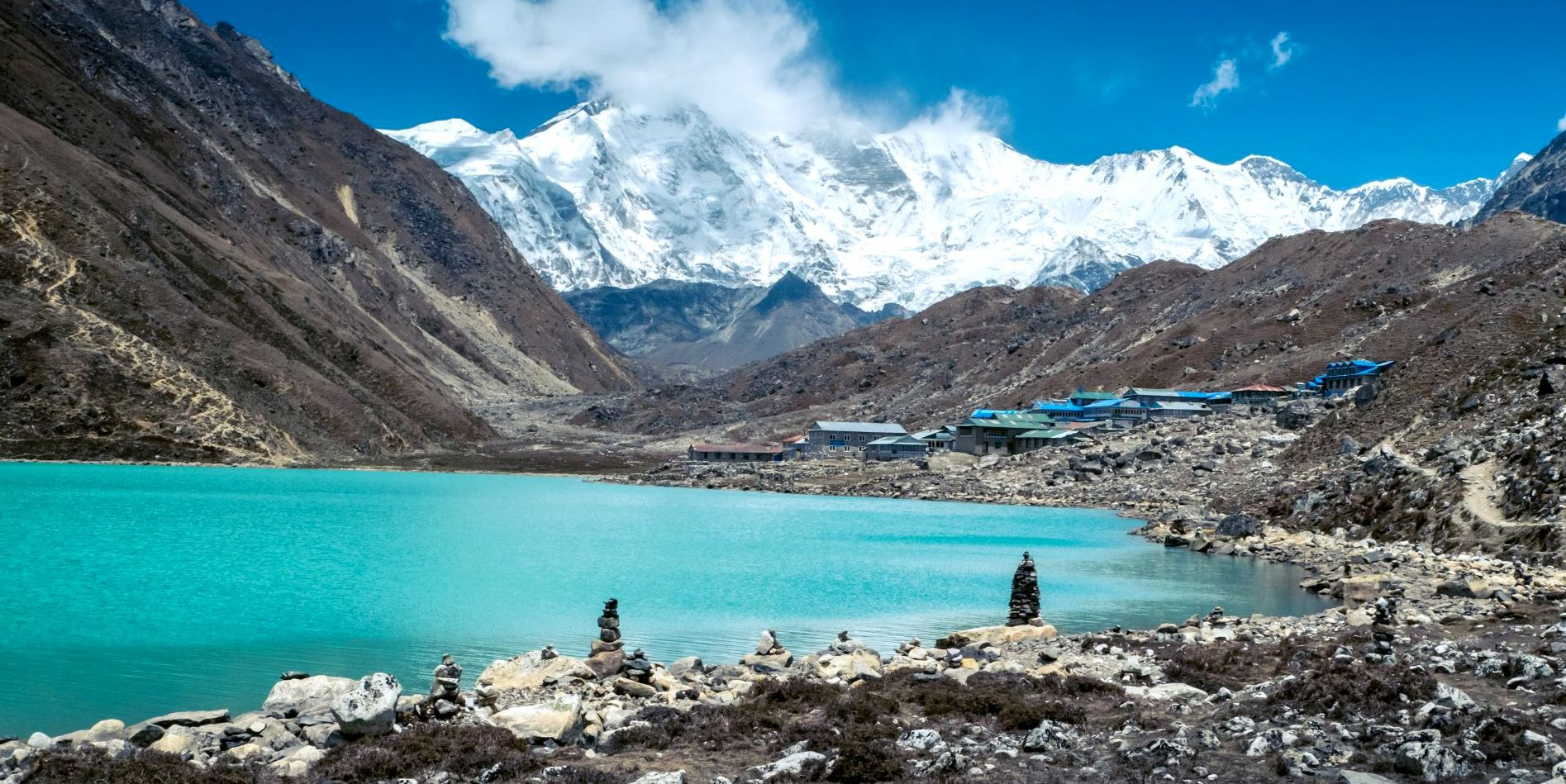
Highlights
-
Gokyo Lakes: The trek features a series of six glacial-fed lakes, collectively known as Gokyo Lakes, which are among the highest freshwater lakes in the world.
-
Gokyo Ri: Climbing this peak at dawn can offer one of the Himalayas' most remarkable sunrise views.
-
Ngozumpa Glacier: Trekkers will cross the Ngozumpa Glacier, the longest glacier in the Himalayas, providing dramatic landscapes and rugged terrain.
Trek Details
-
Duration: Typically, the trek lasts about 12 to 15 days depending on various side trips and the pace of trekking.
-
Distance: The total trekking distance is approximately 70-80 kilometers (44-50 miles).
-
Altitude: The highest point of the trek is Gokyo Ri at 5,357 meters (17,575 feet).
Best Time to Trek: The best trekking season Everest region offers is during the spring (March to May) and autumn (September to November). These months provide clear skies, moderate weather, and the trails are generally dry, making it ideal for hiking.
Difficulty: The Gokyo Lakes Trek is considered moderate to challenging. While not as physically demanding as the Three Passes Trek or the climb to Island Peak, it still involves long trekking days at high altitudes, which can be physically taxing without proper acclimatization.
Preparation and Tips
-
Physical fitness is crucial, so regular cardiovascular exercise and strength training are recommended for several months before the trek.
-
Proper gear is essential, including insulated boots, layers of thermal clothing, and a good quality sleeping bag.
-
Acclimatization days are necessary to adjust to the high altitude and reduce the risk of altitude sickness.
Gokyo Lakes Trek with a reputable tour operator like Relax Getaways ensures that you have knowledgeable guides, proper acclimatization schedules, and a well-planned itinerary, making your trek both enjoyable and safe. This trek not only offers sublime natural beauty with its alpine lakes and majestic mountains but also provides a profound sense of peace and accomplishment as you traverse remote Himalayan paths.
Three Passes Trek
The Three Passes Trek in the Everest Region is an ambitious and thrilling expedition that challenges seasoned trekkers with its rugged trails and high mountain passes. This trek is renowned for its comprehensive exploration of the Khumbu region, encompassing everything from remote valleys to the iconic Everest Base Camp.
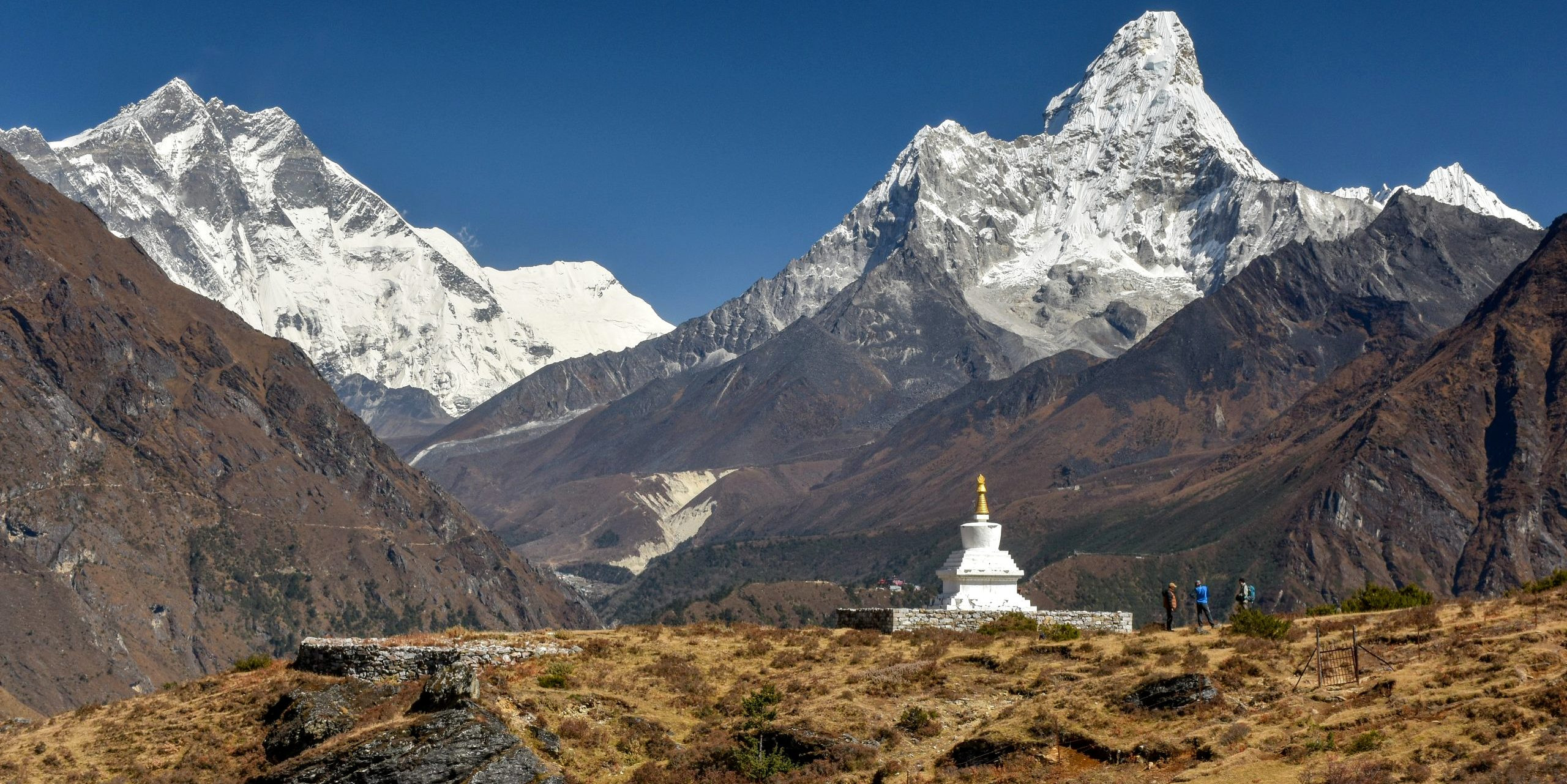
Highlights
-
High Mountain Passes: The trek crosses Kongma La pass, Cho La, and Renjo La, each offering unique vistas and challenging terrain.
-
Everest Base Camp and Kala Patthar: A visit to Everest Base Camp and a climb up Kala Patthar are part of the route, providing up-close views of Everest.
-
Gokyo Lakes and Gokyo Ri: The trail also leads to the pristine Gokyo Lakes and the panoramic Gokyo Ri viewpoint.
Trek Details
-
Duration: The trek typically takes about 18 to 21 days, allowing for proper acclimatization and exploration.
-
Distance: The entire circuit covers approximately 160 kilometers (100 miles).
-
Altitude: The highest point crossed is the Kongma La pass at 5,535 meters (18,159 feet), with several days spent above 5,000 meters.
Best Time to Trek: The best trekking season Everest region experiences are in the spring (March to May) and autumn (September to November). These periods offer the most stable weather conditions and the clearest skies, crucial for high-altitude trekking and safety.
Difficulty: The Three Passes Trek is considered one of the most challenging treks in the Everest Region due to the Three high passes difficulty and the extended duration at high altitudes. It demands excellent physical fitness, stamina, and trekking experience.
Preparation and Tips
-
Everest trek preparation should include rigorous physical training. Focus on cardiovascular endurance, strength training, and altitude adaptation strategies.
-
It's essential to carry the right equipment and clothing to handle the extreme cold and possible sudden weather changes.
-
Acclimatization days are crucial to manage the risks associated with high-altitude sickness.
Three Passes Trek with a professional tour operator like Relax Getaways ensures that you have expert guidance, support for logistics, and enhanced safety measures. This trek is not just about reaching the high passes but about embracing the journey through one of the world's most awe-inspiring landscapes, filled with adventure, cultural encounters, and unforgettable mountain majesty.
Everest Panorama Trek
The Everest Panorama Trek, also known as the Everest View Trek, offers a spectacular introduction to the landscapes and cultural richness of the Khumbu region without the commitment to the higher altitudes and longer durations associated with some of the more challenging routes. Ideal for those with limited time or who prefer a less strenuous trekking experience, this route still delivers breathtaking views of the world’s highest peaks.
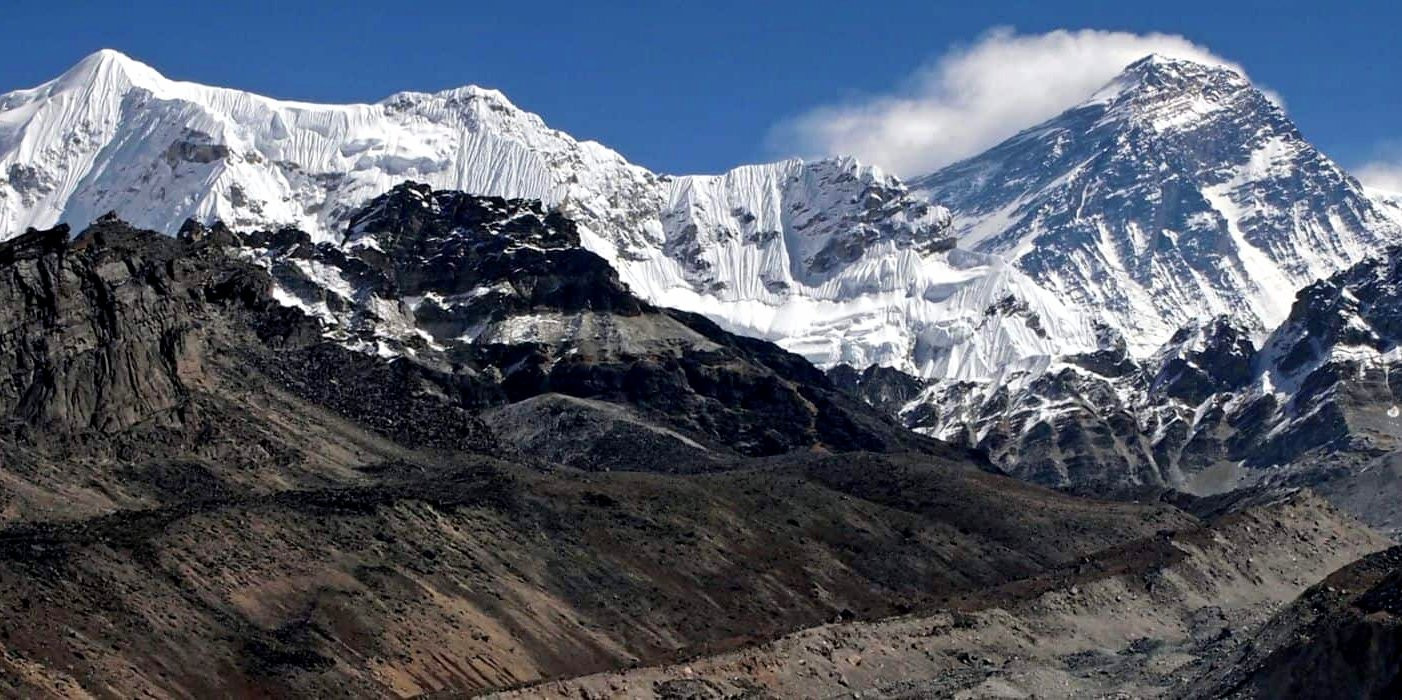
Highlights
-
Tengboche Monastery: A visit to this spiritual center offers insights into Sherpa culture and religion, with stunning backdrops of Ama Dablam and Everest.
-
Short Everest trek: This trek is known for its relatively short duration but still offers ample opportunities to enjoy the majestic Himalayan environment.
-
Everest Panorama Trek route: This carefully planned route provides stunning views and encounters with local wildlife, making each step a discovery.
Trek Details
-
Duration: The trek can be completed in about 8 to 10 days, making it suitable for those with tight schedules.
-
Distance: The total trekking distance is approximately 30-35 kilometers (19-22 miles).
-
Altitude: The highest point of the trek is Tengboche, which is at an altitude of 3,867 meters (12,687 feet).
Best Time to Trek: The best trekking season Everest region offers for the Everest Panorama Trek is during the spring (March to May) and autumn (September to November). These months provide clear skies, stable weather, and moderate temperatures, ideal for trekking and photography.
Difficulty: The Everest Panorama Trek is considered moderate in difficulty. It involves less altitude gain and shorter distances per day compared to the more intensive treks in the region, making it accessible to a wider range of trekkers, including families with older children.
Preparation and Tips
-
Proper preparation should include cardiovascular exercises to improve stamina and some hiking to acclimate to the trails.
-
Packing should focus on layers for variable temperatures and essential trekking gear such as good boots, a backpack, and walking poles.
-
Hiring a guide can enhance the experience with local knowledge and ensure navigation and arrangements are handled professionally.
Opting for a trek like the Everest Panorama with Relax Getaways ensures that even the most time-constrained travelers can experience the magnificence of Everest safely and comfortably. This trek is not only a journey through some of the most beautiful landscapes on Earth but also an uplifting experience amidst the peaks that have inspired mountaineers, adventurers, and dreamers for generations.
Island Peak Trek
The Island Peak Trek combines the classic Everest Base Camp route with the added challenge of ascending Island Peak, also known as Imja Tse, one of the most popular trekking peaks in the Himalayas. This expedition is an excellent introduction to mountaineering, given its manageable technicality and stunning views that rival those of much higher peaks.
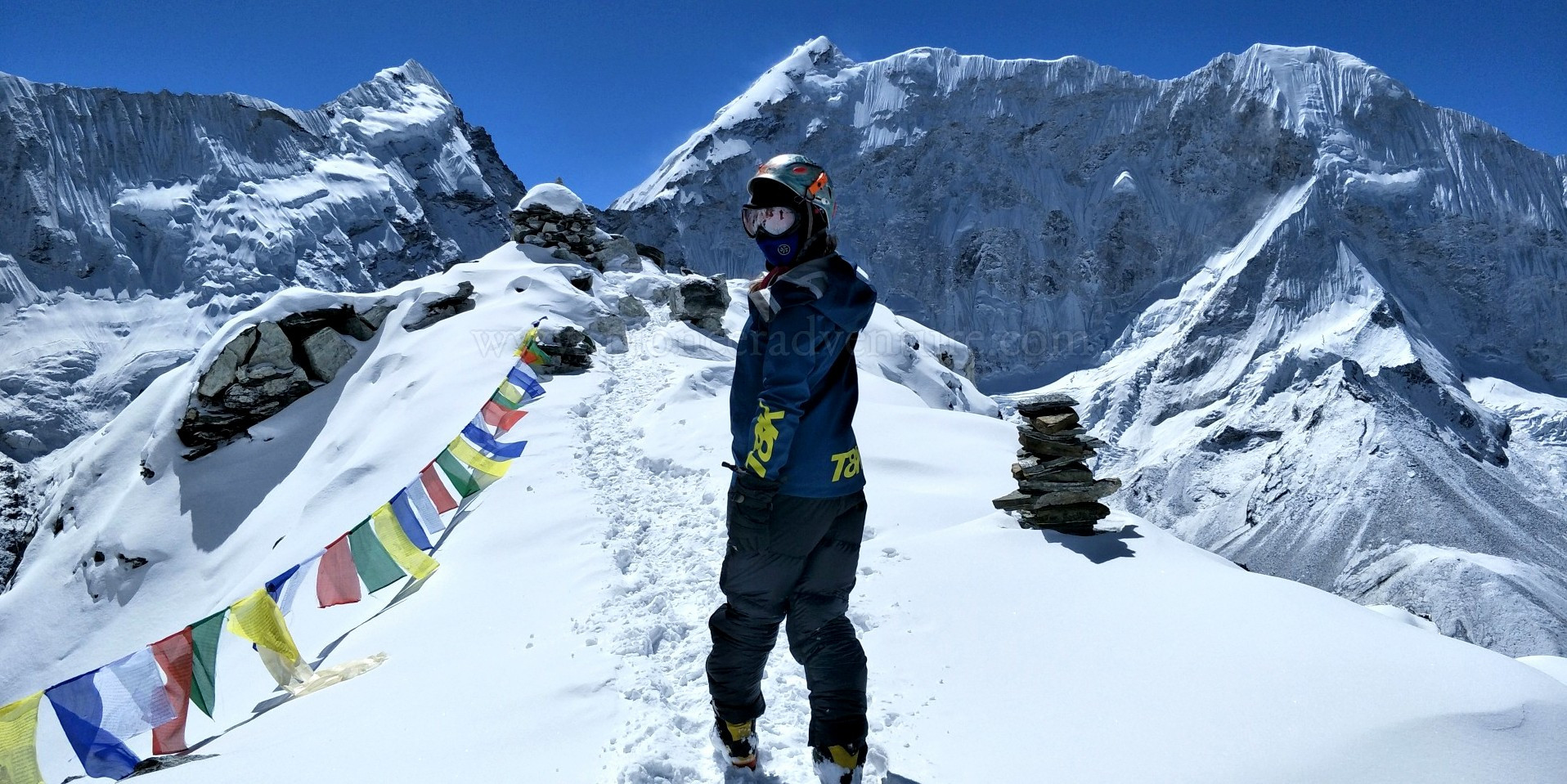
Highlights
-
Island Peak Base Camp: A scenic spot that sets the stage for the climb.
-
Island Peak climbing guide: Essential for navigating the glacier, crevasse, and the ice wall leading to the summit.
-
Combination with Everest Base Camp: Trekkers not only summit a peak but also experience the iconic Everest Base Camp Trek.
Trek Details
-
Duration: The complete trek and climb take about 18 to 20 days, including acclimatization and weather contingency days.
-
Distance: The trek covers approximately 100 kilometers (62 miles) round trip.
-
Altitude: The summit of Island Peak stands at 6,189 meters, with acclimatization hikes leading up to higher altitudes for preparation.
Best Time to Trek: The ideal months for the Island Peak Trek are during the pre-monsoon season (March to May) and the post-monsoon season (September to November). These times offer the most stable weather conditions, crucial for climbing and high-altitude trekking.
Difficulty: The Island Peak difficulty is considered moderate to challenging among trekking peaks due to its technical sections, which require climbers to use climbing harnesses, crampons, and ropes. Physical fitness and some prior climbing experience are highly recommended.
Preparation and Tips
-
Extensive Everest trek preparation is essential, including physical conditioning, familiarity with climbing equipment, and some technical climbing training if possible.
-
It's important to ensure you have the appropriate climbing gear, which can often be rented in Kathmandu or Namche Bazaar.
-
Acclimatization is key to a successful summit, so make sure your itinerary allows for proper adjustment to the altitude.
Island Peak Trek with a company like Relax Getaways ensures that you have experienced guides who can provide valuable mountaineering knowledge and support. This trek is not just about reaching a summit; it’s about embracing a full Himalayan mountaineering experience that offers immense satisfaction and spectacular scenic rewards.
Health and Safety for 5 Best Treks in Everest Region
Health and safety are crucial considerations when undertaking any of the 5 Best Treks in the Everest Region. Here are some key health and safety tips and considerations for trekkers planning to explore these high-altitude trails:
Acclimatization and Altitude Sickness
-
Follow a planned itinerary that allows for gradual ascent and includes rest days for acclimatization.
-
Recognize the symptoms of altitude sickness, which include headache, nausea, dizziness, and fatigue. If symptoms appear, it’s essential to stop ascending and, if necessary, descend to a lower altitude.
Hydration and Nutrition
-
Drink plenty of water; aim for at least 3-4 liters per day. Avoid or limit diuretics like coffee and alcohol.
-
Eat balanced meals provided by the trekking service, which are usually designed to be high in carbohydrates and sufficient in protein to meet the energy demands of trekking.
Travel Insurance
Physical Fitness and Training
-
Engage in cardiovascular exercises like running, cycling, and swimming several months before the trek.
-
Include strength training, focusing on legs, core, and back, which will help you handle the physical demands of trekking and carrying a backpack.
Guides and Porters
-
Experienced guides are essential for navigating the trails, managing logistics, and providing insights into local culture and environment.
-
Porters can help carry your gear, reducing your load and allowing you to focus more on the trek.
Gear and Equipment
-
Invest in quality trekking boots, a warm sleeping bag, and appropriate clothing for varying temperatures.
-
Don’t forget essential items like a hat, gloves, and sunglasses for sun protection.
Medical Kit and Health Precautions
-
Include items such as bandages, antiseptic, blister treatment, and basic medications for common ailments like headaches and stomach issues.
-
Consider consulting a travel doctor for vaccinations and altitude sickness medication like Acetazolamide (Diamox).
Weather Considerations
Environmental Considerations
By following these health and safety guidelines, trekkers can enjoy a safer and more rewarding experience while exploring the beautiful but challenging trails of the Everest Region.
Tips for 5 Best Treks in Everest Region
Trekking in the Everest Region is a dream for many adventurers, offering some of the most breathtaking landscapes and challenging treks in the world. Here are essential tips for anyone planning to undertake one of the 5 Best Treks in the Everest Region:
-
Choose the Right Trek: For beginners, the Everest Panorama Trek is advisable as it provides spectacular views with a moderate difficulty level. More experienced trekkers might opt for the Everest Base Camp Trek, Gokyo Lakes Trek, or the Three Passes Trek for a more challenging experience.
-
Preparation and Training: Engage in cardio-based activities such as running, cycling, and hiking to improve stamina. Strength training, particularly for legs, back, and core, is also vital.
-
Acclimatization: Include extra days in your itinerary specifically for acclimatization to reduce the risk of altitude sickness. Spending extra days at key altitudes like Namche Bazaar can make a significant difference.
-
Packing Essentials: Ensure you have the right gear, including a good quality sleeping bag, layers of clothing for varying temperatures, and a sturdy pair of trekking boots.
-
Navigation and Guides: A local guide not only ensures you follow the correct paths but also enriches your trekking experience with insights into the local culture and environment.
-
Health and Safety: Drink plenty of water and eat meals rich in carbohydrates and proteins to maintain energy levels.
-
Insurance: Ensure your travel insurance covers high-altitude trekking and emergency evacuation, which is crucial in the remote regions of the Himalayas.
-
Respect Local Culture: Respect local customs and traditions. Dress modestly, ask permission before taking photographs, and be courteous.
-
Environmental Responsibility: Carry out all your trash and dispose of waste properly. Use water sparingly and avoid disturbing wildlife.
-
Stay Informed: Weather in the mountains can be unpredictable. Stay updated on weather forecasts and listen to local advice to avoid dangerous situations.
These tips can help ensure a successful and memorable trekking experience in the Everest Region, allowing you to enjoy the natural beauty and cultural richness of this iconic part of the world.
Best Time for 5 Treks in Everest Region
Choosing the best time to trek in the Everest Region is crucial for a safe and enjoyable experience. The weather in the Himalayas can significantly influence your trekking experience, with clear skies providing the best mountain views and safer trails. Here are the optimal seasons for undertaking the 5 Best Treks in the Everest Region:
Pre-Monsoon/Spring (March to May)
-
Advantages: This is one of the most popular times to trek in the Everest Region. The weather is generally stable with warm days. The skies are clear, offering excellent visibility of the Himalayan peaks. Spring also brings the hills alive with rhododendrons and other wildflowers blooming, adding a splash of color to the landscape.
-
Considerations: Trails can be crowded, especially in April, as this is the peak season for trekkers. Booking accommodations and flights to Lukla in advance is advisable.
Post-Monsoon/Autumn (Late September to November)
-
Advantages: Autumn is considered the best season for trekking in the Everest Region due to its stable weather and clear skies. Temperatures are comfortably cool, ideal for long trek days. This season also coincides with several local festivals, providing trekkers with a cultural bonus.
-
Considerations: Like spring, autumn sees a high number of trekkers on the trails, so it is another period when advanced booking becomes essential. Early snowfall in late November can sometimes pose challenges at higher altitudes.
Off-Peak Seasons
-
Monsoon (June to Early September): Trekking during the monsoon is generally not recommended due to heavy rains, slippery trails, leeches, and obscured mountain views. However, in areas like the upper part of the Khumbu, rainfall is less as the region lies in the rain shadow area, making it possible but still challenging.
-
Winter (December to February): Winter trekking can be a serene experience with fewer trekkers on the path and clear days. However, it is extremely cold, especially at higher altitudes, which can be challenging. Some higher passes and trekking routes may also be closed due to snow.
Choosing Your Trek
-
Everest Base Camp Trek: Best in spring and autumn when the base camp is bustling with climbing expeditions, enhancing the overall experience.
-
Gokyo Lakes Trek: Ideal in autumn for the best views of the lakes and surrounding peaks without the cold of winter or the haze of spring.
-
Three Passes Trek: Recommended in autumn, as the passes are generally snow-free and offer clear, panoramic views.
-
Everest Panorama Trek: Suitable for spring and autumn due to lower altitudes than other treks, providing milder weather even in the colder months.
-
Island Peak Climbing with Everest Base Camp Trek: Best undertaken in spring or autumn when the climbing conditions are safest and visibility is at its best.
Considering these factors when planning your trek to the Everest Region will help ensure that you have the safest and most rewarding experience possible, taking advantage of the best weather conditions for trekking and mountaineering.
The Everest Region offers a diverse array of treks, each providing a unique adventure and perspective on Nepal's majestic Himalayas. From the classic Everest Base Camp Trek to the serene Gokyo Lakes Trek, the challenging Three Passes Trek, the accessible Everest Panorama Trek, and the adventurous Island Peak Trek, there is something for every level of trekker. With Relax Getaways, adventurers can experience these incredible journeys with the assurance of safety, comfort, and expert guidance. Whether you’re a novice looking for a scenic introduction to the Himalayas or an experienced climber in search of high-altitude challenges, these treks offer the perfect blend of natural beauty, cultural immersion, and personal achievement. Each trek provides an unforgettable experience that connects you deeply with nature and the enduring spirit of the Sherpa community.
FAQs for 5 Best Treks in Everest Region
Q: What is the best time to trek in the Everest Region?
A: The optimal trekking seasons are during the pre-monsoon (March to May) and post-monsoon (September to November) periods. These months offer clear skies, stable weather, and the best views.
Q: Do I need a guide for trekking in the Everest Region?
A: While not mandatory for all treks, it is highly recommended to have a guide, especially for more challenging routes like the Three Passes Trek or the Island Peak Trek. Guides can ensure safety, assist with route navigation, and enrich your cultural understanding.
Q: What permits do I need for trekking in the Everest Region?
A: Necessary permits include the Sagarmatha National Park permit and the Khumbu Pasang Lhamu Rural Municipality permit. For climbing treks like Island Peak, additional permits from the Nepal Mountaineering Association are required.
Q: How should I prepare for high-altitude trekking?
A: Proper acclimatization is crucial to prevent altitude sickness. Physically, you should engage in cardiovascular and strength training exercises. It’s also important to know the symptoms of altitude sickness and how to treat them.
Q: What are the essential items to pack for these treks?
A: Key items include durable trekking boots, layered clothing for variable temperatures, a high-quality sleeping bag, backpack, sunglasses, sunscreen, first-aid kit, and water purification tools. For technical climbs, additional specialized gear is needed.
Q: How much does it cost to trek in the Everest Region?
A: Costs can vary widely, ranging from $1,000 to $3,000, depending on the trek's duration, level of comfort, and whether you hire porters or guides. These costs typically cover permits, lodging, guide services, and meals.
Q: Can I trek in the Everest Region during the winter?
A: Winter trekking is feasible but challenging due to colder temperatures and snow. Lower altitude treks like the Everest Panorama Trek are more manageable in winter compared to high-altitude treks.
Q: What is the accommodation like on these treks?
A: Accommodation varies from basic teahouses with shared facilities to more comfortable lodges with private rooms and hot showers, mainly found on popular routes like the Everest Base Camp Trek.
Q: Are there any cultural etiquettes I should be aware of while trekking?
A: Yes, respect local customs and religious practices. Walk clockwise around religious structures, dress modestly, and seek permission before photographing people.
For the Nepal tour, please click here.
If you are looking for different kinds of Nepal Tours or Trekking Packages, feel free to contact us.
